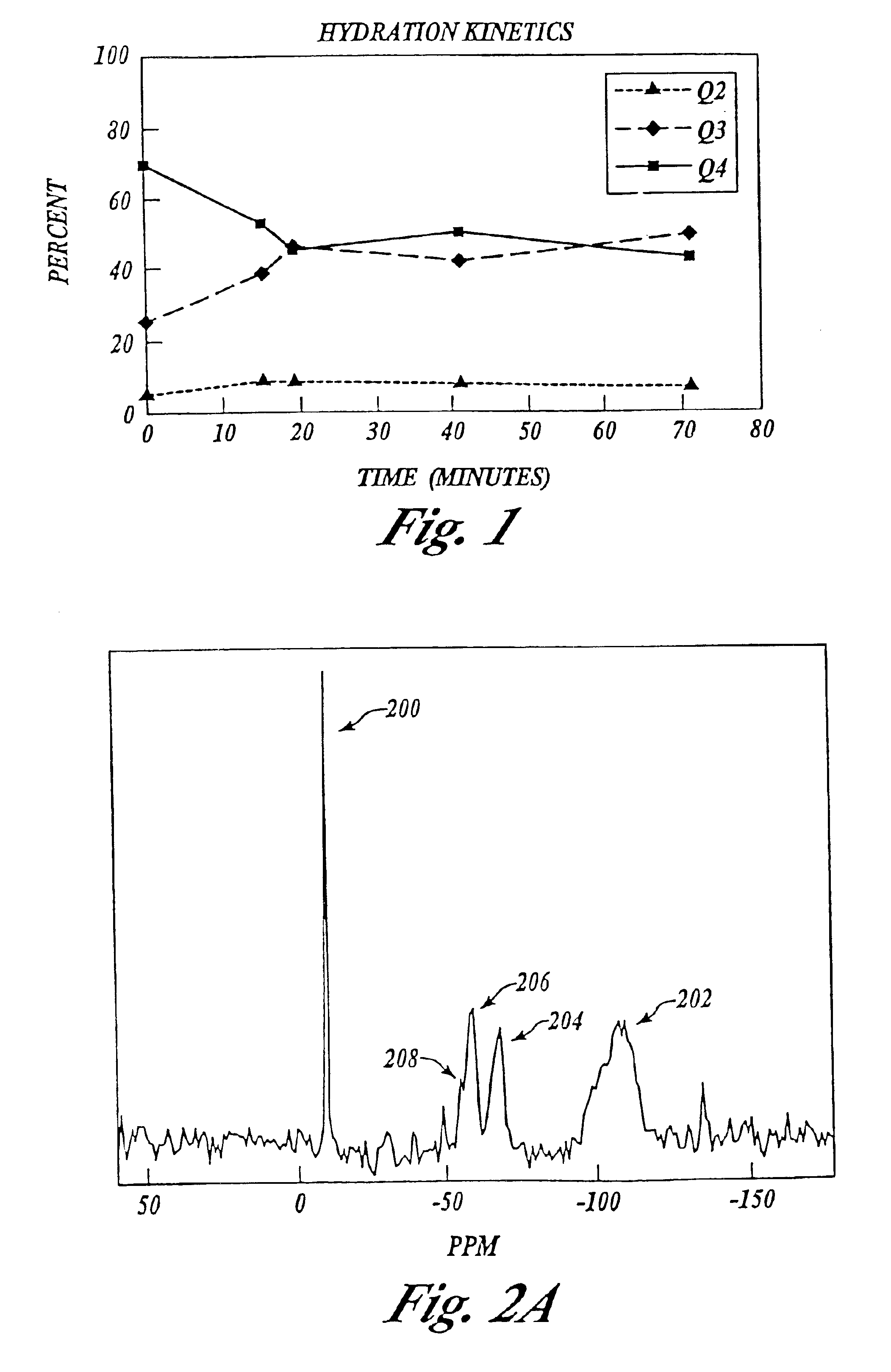Self-assembled monolayer and method of making
a monolayer and self-assembling technology, applied in the field of self-assembling monolayer and making method, can solve the problems of incompletion deposition and bulk solution phase polymer formation, and achieve the effects of reducing the available surface area, minimizing bulk polymerization, and reducing the formation of monolayer defects
- Summary
- Abstract
- Description
- Claims
- Application Information
AI Technical Summary
Benefits of technology
Problems solved by technology
Method used
Image
Examples
example 1
An experiment was conducted to test the influence of supercritical carbon dioxide (SCCO2) on the hydration of a mesoporous silica designated MCM-41, obtained by making the MCM-41 according U.S. Pat. No. 5,264,203 (Mobil Oil Corporation, Fairfax, Va.). The calcined substrate (primarily Q4 [non-hydroxylated silanol]) was free of any silane(s).
Water was introduced to the pores of the MCM-41 sample via passive hydration in a 100% humidity chamber, followed by subjecting the hydrated sample to SCCO2 forced hydrolysis at 100° C. This hydration protocol involved neutral pH, no salt, no ceramic oxide or organic contaminants; just water, carbon dioxide and heat.
NMR analysis showed that this hydrolysis treatment was found to increase the bonding fraction (hydroxylated silicon atoms) to 46% Q3 (surface silanol) and 8% Q2 (geminal silanol). This hydrolysis was carried out in the presence of excess water and hydrolysis stopped at this point, with no damage to the mesostructure. The mild conditio...
example 2
An experiment was conducted to compare the surface density of assembly molecules using prior liquid solution deposition as reported by Feng et al., 1997 and Liu et al, 1998 (described in Background above), and using the supercritical fluid solution deposition of the present invention.
Surface density was determined gravimetrically and by 29Si NMR.
The surface density of the product made with the liquid solution deposition which included an azeotropic distillation was 5.0-5.2 silanes / nm2.
According to the present invention, The silica was hydrated by simply storing it in a 100% humidity chamber and monitoring the sample's weight as a function of time, stopping at 20-25% weight gain. The MCM-41 was added to the sample holder along with the MPTMS (mercaptopropyl trimethoxysilane), then the system was sealed and brought up to pressure and temperature (7500 psi and 150° C.) with SCCO2. After only 5 minutes, a monolayer with a surface density of 6.4 silanes / nm2 was deposited which was surpri...
example 3
An experiment was conducted as in Example 2 wherein a portion of the material from the 5-minute sample was re-exposed or re-introduced to the supercritical fluid environment for an additional 30 minutes.
Results are shown in FIG. 3. The evolution or formation of the monolayer continued in the same manner as for continuous supercritical fluid exposure.
PUM
| Property | Measurement | Unit |
|---|---|---|
| width | aaaaa | aaaaa |
| time | aaaaa | aaaaa |
| time | aaaaa | aaaaa |
Abstract
Description
Claims
Application Information
 Login to View More
Login to View More - R&D
- Intellectual Property
- Life Sciences
- Materials
- Tech Scout
- Unparalleled Data Quality
- Higher Quality Content
- 60% Fewer Hallucinations
Browse by: Latest US Patents, China's latest patents, Technical Efficacy Thesaurus, Application Domain, Technology Topic, Popular Technical Reports.
© 2025 PatSnap. All rights reserved.Legal|Privacy policy|Modern Slavery Act Transparency Statement|Sitemap|About US| Contact US: help@patsnap.com



